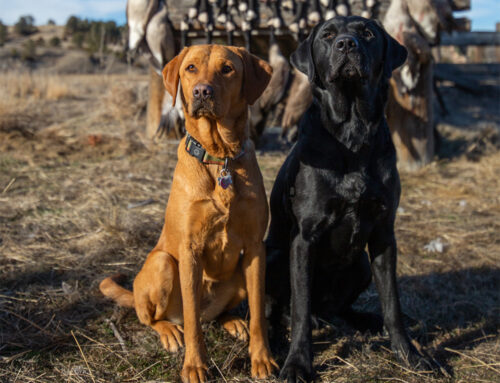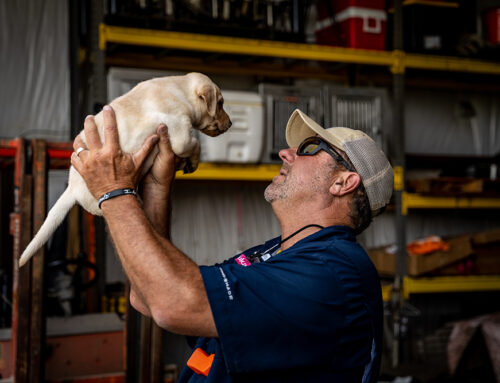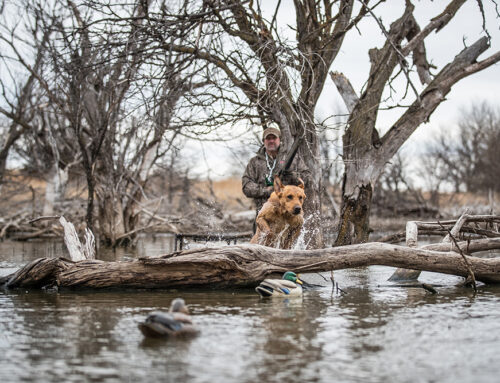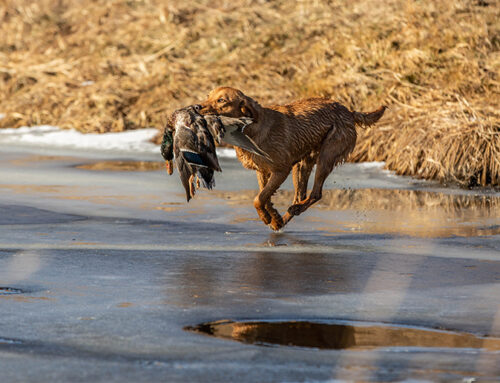Duck Dog Tip of the Week: Training Your Sporting Dog for the Field and as a Family Pet

Featuring Chris Akin. | Webb Footed Kennel | @webbfootedkennel
Part of the reason Labrador retrievers are so popular is because they are excellent family pets as well as sporting dogs. When I got started training, all retrievers and bird dogs were kept in kennels. Rarely did any live in the house. The house was a place for pets. The theory was that dogs kept in kennels stayed focused on the tasks at hand. Some retrieved ducks, others pointed birds, but folks thought that bringing retrievers or bird dogs into the house softened them too much.
My experience says that the opposite is true, and that’s why I believe the Lab is the best family and sporting dog out there.
A Lab’s main objective in life is to please its master. This is why Labs are used for hunting, for field trials, as bomb detection dogs, as seeing eye dogs, and for other jobs. Labs learn readily, they want to have a task, and once they know what is expected of them they’re good to go. Labs living in a dog run learn how to please themselves. Bored dogs without a task come up with games. They dig holes, chew crates, and bark to get attention. The list goes on, and it’s very long.
Having a dog in the home helps them to create a stronger bond with their handler. They learn how to read our facial expressions, they respond based on our tones of voice, and they understand our body language. When they know all that, they’re already further along in understanding what we want them to do.
One big difference between a house dog and a sporting dog is with regard to obedience. House dog training involves a lot of obedience work. House dogs come in contact with small children, the elderly, and folks who don’t like dogs, so they need to be well mannered. House dogs aren’t allowed to chew television cords, Internet cables, boots, or the furniture. Sporting dogs have a different type of obedience. When sporting dogs are around people they’re usually looking for a task to perform, such as jumping into the blind or retrieving a duck or bumper. We want sporting dogs to run full bore and to hit the water with a sense of purpose, so we cultivate that drive.
The best reason to bring a sporting dog into the home is because of the increased connection and bond. That bond is strengthened through the housebreaking process, by being taught to sit, by being taught to wait for his meal, and how to walk under control on a lead. Bringing a sporting dog into the home makes for really easy socializing. The dog will meet a lot of different people—and other dogs. That bond and connection make it easier for both the handler and the dog when it comes to introducing him to his hunting and training world.
Because the pup is confident, he’ll readily take to the water, the fields and woods, his kennel, a duck boat, retrieving, and basically everything he’ll experience during his life. The foundation is strong, and that makes for a natural next step to formal training. The dog is confident and happy, and that makes him willing to learn denials, be introduced to starter pistols, learn to line, fetch with a soft mouth, deliver to hand, and more. Obedience coming from that bond is what makes the dog rise to the challenge of steady single retrieves, steady double retrieves, running marks and blinds, entering and exiting blinds and boats, and the like. That training makes for a happy dog that knows his job and what’s expected of him.
My family orients our lives around the dogs. Sure, we expect high levels of performance out of them in field trails, during hunt tests, and in related activities throughout our hunting seasons. But our couches are full of paw prints, and dog hair is everywhere in the house, in the truck, and on our clothes. I have no idea how much dog hair I’ve swallowed in my life, but it’s a lot. I wouldn’t have it any other way.







Leave A Comment